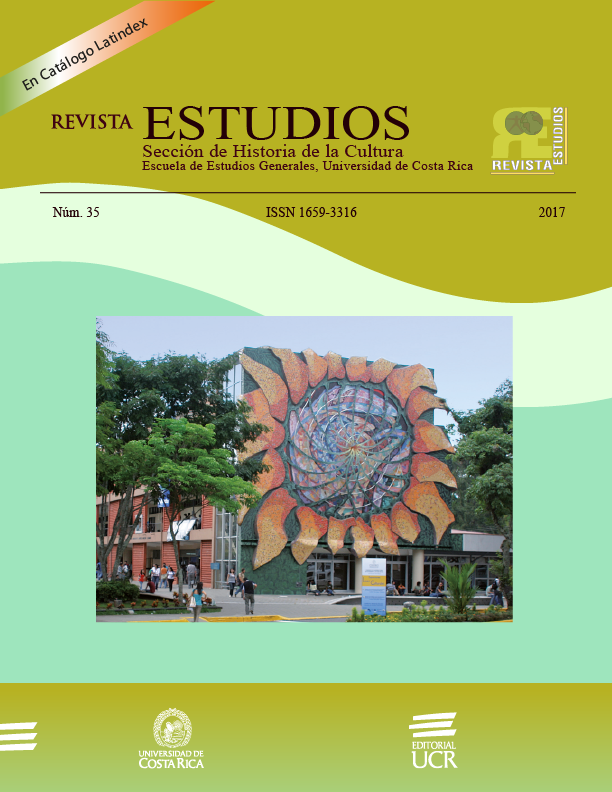Resumen
Habitualmente se han distinguido tres etapas en el proceso de divinización de Alejandro Magno ligadas a tres eventos concretos: la visita al oráculo de Amón en Siwa, el intento de introducción de la proskynesis y la deificación propiamente dicha. Sin embargo, si nos basamos en la narración de las fuentes clásicas, parece más correcto dividirlo en las siguientes fases: parentesco con los héroes, reconocimiento como hijo de Zeus y superación de las hazañas de héroes y dioses. En todo momento durante este proceso, Alejandro supo aprovechar la religión y su propia filiación divina como instrumentos políticos para el control de los territorios tan dispares que conformaban su imperio.Citas
Fuentes clásicas
ARISTÓTELES: Política. Centro de Estudios Políticos y Constitucionales. Madrid. 2005.
ARISTÓTELES: Ética a Nicómaco. Gredos. Madrid. 2010.
ARRIANO: Anábasis de Alejandro Magno. Libros I-III. Gredos. Madrid. 1982.
ARRIANO: Anábasis de Alejandro Magno. Libros IV-VIII (India). Gredos. Madrid. 1982.
DIODORO DE SICILIA: Biblioteca histórica. Libros XV-XVII. Gredos. Madrid. 2012.
HERÓDOTO: Historias. Libros I-IV. Akal/Clásica. Madrid. 1994.
ISÓCRATES: Panegyricus. Hardvard University Press. Cambridge. 1980.
JUSTINO: Epítome de las “Historias Filípicas” de Pompeyo Trogo. Gredos. Madrid. 2008.
MELARA NAVÍO, A. G. (2011): El noble Corán. Traducción comentada. Çagri Yayinlari. Estambul.
PLUTARCO: Vidas paralelas. Lisandro-Sila. Cimón-Lúculo. Nicias-Craso. Gredos. Madrid. 2007.
PLUTARCO: Vidas paralelas. Alejandro-César. Pericles-Fabio Máximo. Alcibíades-Coriolano. Cátedra. Madrid. 2009.
PSEUDO-CALÍSTENES: Vida y hazañas de Alejandro Magno. Gredos. Madrid. 2010
QUINTO CURCIO RUFO: Historia de Alejandro Magno. Ediciones Orbis. Barcelona. 1985.
UBIETA, J. A. (coord.) (1975): Biblia de Jerusalén ilustrada. Tomo 2. Club Internacional del Libro. Madrid.
Bibliografía
ABD EL-RAZIQ, M. (1984): “Die Darstellungen und Texte des Sanktuars Alexanders der Grossen im Tempel von Luxor”. Archäologische Veröffentlichungen, Deutschen Archäologisches Institut, Abteilung Kairo, 16. Mainz.
ALVAR, J. y BLÁZQUEZ, J. M. (eds.) (2000): Alejandro Magno: Hombre y mito. Actas. Madrid.
BELLINGER, A. R. (1963): “Essays on the coinage of Alexander the Great”. Numismatic Studies 11. The American Numismatic Society. Nueva York.
BLÖBAUM, A. I. (2006): “„Denn ich bin ein König, der die Maat liebt“: Herrscherlegitimation im spätzeitlichen Ägypten. Eine vergleichende Untersuchung der Phraseologie in den offiziellen Königsinschriften vom Beginn der 25. Dynastie biszum Ende der makedonischen Herrschaft”. Aegyptiaca Monasteriensia, 4: 419-423.
BOSCH-PUCHE, F. (2009): “La titulatura faraónica de Alejandro Magno: nuevas aportaciones”. Trabajos de Egiptología, 5.1: 103-116.
BOSCH-PUCHE, F. (2012): “Alejandro Magno y los cultos a animales sagrados en Egipto”. Aula Orientalis, 30.2: 243-277.
BOSCH-PUCHE, F. (2013): “The Egyptian royal titulary of Alexander the Great I: Horus, Two Ladies, Golden Horus and Throne Names”. Journal of Egyptian Archaeology, 99: 131-154.
BOSCH-PUCHE, F. (2014a): “The Egyptian royal titulary of Alexander the Great II: Personal Name, Empty Cartouches, Final Remarks and Appendix”. Journal of Egyptian Archaeology, 100: 89-109.
BOSCH-PUCHE, F. (2014b): “Alexander the Great’s Egyptian names in the Barque Shrine at Luxor Temple” en GRIEB, V., NAWOTKA, K. y
WOJCIECHOWSKA, A. (eds.): Alexander the Great and Egypt: History, art, tradition. Harrassowitz Verlag. Wiesbaden: 55-87.
BOSWORTH, A. B. (1996): Alejandro Magno. Cambridge University Press. Madrid.
CARTLEDGE, P. (2009): Alejandro Magno. La búsqueda de un pasado desconocido. Ariel. Barcelona.
DAHMEN, K. (2007): The legend of Alexander the Great on Greek and Roman coins. Routledge. Londres y Nueva York.
DOMÍNGUEZ, A. J. (2013): Alejandro Magno. Rey de Macedonia y de Asia. Sílex. Madrid.
FAKHRY, A. (1950): The Egyptian Deserts: Bahria Oasis, vol. II. El Cairo.
GÓMEZ, F. J. (2007): La leyenda de Alejandro. Mito, historiografía y propaganda. Universidad de Alcalá. Alcalá de Henares.
GUZMÁN GUERRA, A. y GÓMEZ ESPELOSÍN, F. J. (1997): Alejandro Magno de la historia al mito. Alianza Editorial. Madrid.
HARDY, D. (2000): The coinage of Alexander the Great. Numismatic Museum of Athens. Atenas.
HOGARTH, D. G. (1987): “The deification of Alexander the Great”. English Historical Review, II: 317-329
LANE FOX, R. (2007): Alejandro Magno, conquistador del mundo. El Acantilado. Barcelona.
LLOYD, A. (2016): “Alejandro en Egipto”. Desperta Ferro, 33: 48-53.
LORBER, C. C. (2011): “Theos aigochos: the aegis in Ptolemaic portraits of divine rulers” en ISSIF, P. P., CHANKOWSKI, A. S. y LORBER, C. C. (eds.): More than men, less than gods. Studies on the royal cult and imperial worship. Proceedings of the International Colloquium organized by the Belgian School at Athens. Peeters. París: 293-357.
MORKHOLM, O. (1991): Early Hellenistic coinage: from the accession of Alexander to the Peace of Apamea (336-186 B.C.). Cambridge University Press. Cambridge.
NAVARRO, F. J. (2013): Alejandro Magno. Héroe, líder y conquistador. Rialp. Madrid.
ROBBINS, G. (1997): The art of Ancient Egypt. British Museum Press. Londres.
ROBINSON, C. A. (1957): “The extraordinary ideas of Alexander the Great” en GRIFFITH, G. T. (ed.) (1966): Alexander the Great. The main problems. Heffer. Cambridge: 53-72.
ROISMAN, J. (2003): Brill’s companion to Alexander the Great. Brill. Leiden.
SHEEDY, K. A. (2007): The Westmoreland Collection. Ancient Coins in Australian Collections vol. 1. Alexander and the Hellenistic Kingdoms. Coins, image and the creation of identity. Australian Centre for Ancient Numismatic Studies. China.
SHEPPARD, R. (2011): Alejandro Magno. Guerras. Editorial Libsa. Madrid.
SMITH, W. S. (1958): The art and architecture of Ancient Egypt. Penguin. Londres.
STEWART, A. (1993): Faces of power: Alexander’s image and Hellenistic politics. University of California Press. Berkeley.
TARN, W. W. (1948): “Alexander’s Deification” en GRIFFITH, G. T. (ed.) (1966): Alexander the Great. The main problems. Heffer. Cambridge: 151-178.

